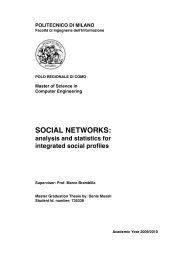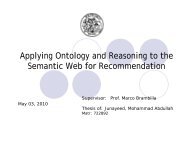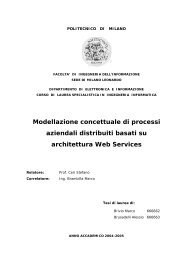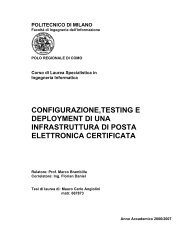Thesis full text PDF - Politecnico di Milano
Thesis full text PDF - Politecnico di Milano
Thesis full text PDF - Politecnico di Milano
Create successful ePaper yourself
Turn your PDF publications into a flip-book with our unique Google optimized e-Paper software.
We can see in depth all the technologies that are used to build the Web e<strong>di</strong>tor tool:HTMLJavascript and DHTMLW3C DOMOpenJacob Draw2D javascript libraryYahoo! User Interface library (UI)AJAX XMLHttpRequestTomcat 5.5.17 severServer-side scripting (Java server pages, Java Servlet) and Java classesXML objectsMySQL databaseClient-side environmentAt client side, HTML provides the frame of the e<strong>di</strong>tor Web page. The graphic interface is entirelyimplemented at client side with Javascript. The event model (DHMTL) allows Javascript torespond to events such as mouse click; this is the key to make interactive the interface Themodelling canvas is implemented by the Openjacob Draw2D library, that in turns exploitsJavaScript and DOM. To support the interaction with the user and to build the e<strong>di</strong>tor panels andwindows we have used the Yahoo! User Interface library, a set of utilities and controls written inJavaScript for buil<strong>di</strong>ng richly interactive Web applications using techniques such as DOMscripting, DHTML and AJAX. User interactions at the interface level trigger events (1) that in turnactivate the interaction with the backend components (2) at the server side.Server-side environmentTo interact with the server-side of the application and call server objects the e<strong>di</strong>tor uses the AJAXtechnologies and in particular the XMLHttpRequest object (3). This object allows to send andreceive HTTP requests and responses to and from web servers. The XMLHttpRequest class iswhat makes true AJAX application development possible. The HTTP requests made withXMLHttpRequest work just as if the browser were making normal requests to load a page orsubmit a form, but without the user ever having to leave the currently loaded web page. AJAXtechnologies build an asynchronous system against the tra<strong>di</strong>tional approach which is based onsynchronous calls. Tra<strong>di</strong>tional web apps use a synchronous system: you must wait for the serverto send you the first page of a system before you can request the second page. WithXMLHttpRequest the client has the ability to make lots of small requests to the server and thepage is dynamically updated by the server response. The end result is an application that feelsmuch more responsive, as users spend significantly less time waiting for requests to process, and57


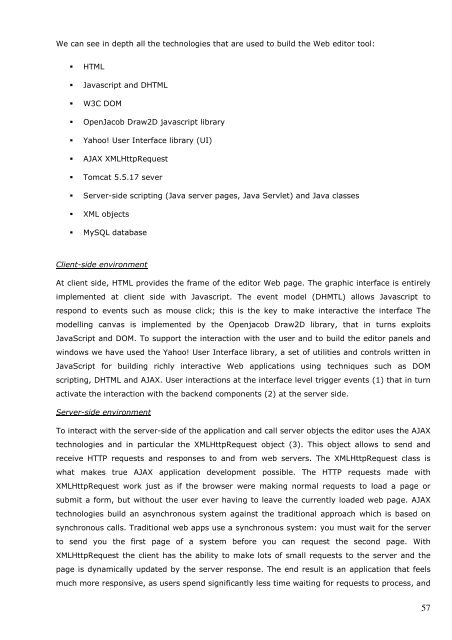
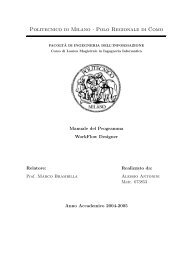
![Full text preview of the chapter [PDF] - Politecnico di Milano](https://img.yumpu.com/44021924/1/180x260/full-text-preview-of-the-chapter-pdf-politecnico-di-milano.jpg?quality=85)
